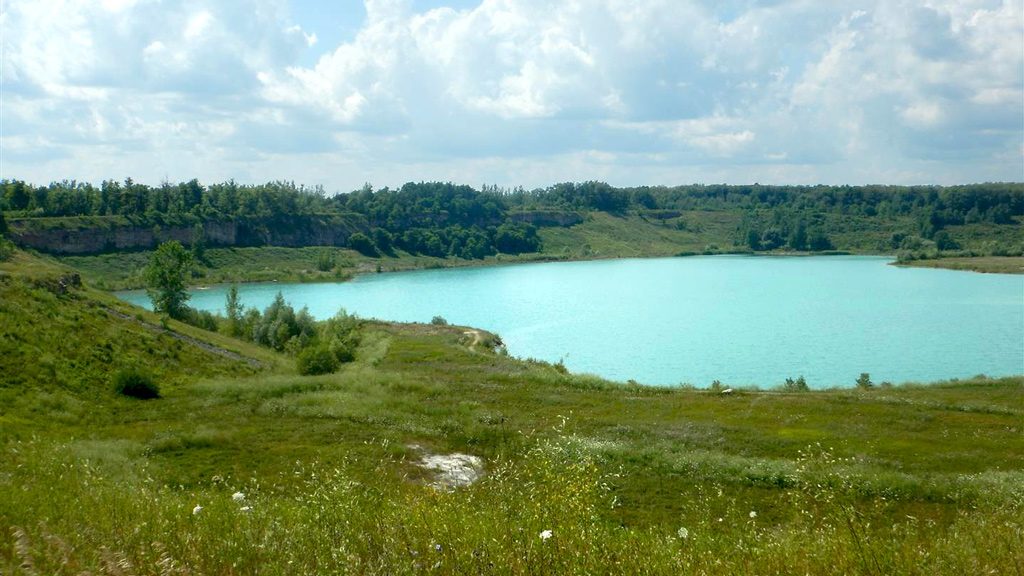Phase two of the Ontario Stone, Sand and Gravel Association’s Wetland Rehabilitation Study examines the quality of rehabilitated pits and quarries and found that in addition to providing valuable wetland habitat for wildlife across the province, they also provide cultural and economic benefits.
The overall study focused on creation of a new wetland habitat through progressive and final rehabilitation of surrendered aggregate sites in the Greenbelt Plan, the Niagara Escapement Plan and Oak Ridges Moraine Conservation Areas, which have experienced wetland loss and now have strengthened protection for natural features, explained Ashlee Zelek, director, environment and education, OSSGA.
OSSGA engaged Stantec Consulting to conduct the second phase of the study, which analyzed seven sites within the provincial plan areas identified in the first phase to better understand the ecological and cultural characteristics of aquatic habitat created by rehabilitating pits and quarries.
“From a public awareness point of view, we are using this as an opportunity to illustrate and highlight the great things that the industry (aggregate producers) is doing,” explained Sharon Armstrong, vice president, communications and operations, OSSGA. “The industry itself is always looking to improve and looking at what are some of the rehabilitation processes that we can put in place to make sure that we actually are increasing the quality of the habitat that we are leaving behind, not just the quantity of it.”
In the first phase of the study, which began in 2017, OSSGA conducted a survey of new wetlands created through the rehabilitation of former pits and quarries.
“We looked at the amount of wetland and pond habitat that was created through aggregate rehabilitation within the provincial plan areas and the study found that 293 hectares of wetland habitat was created which is equivalent to over 1,800 NHL-size rinks,” said Armstrong.
“The original study was a desktop study, a study based on aerial photography,” stated Zelek. “This (phase two) was a field study on the ground. The intent was to basically ground-truth what came out of phase one of the study and to really understand the nature of what wildlife was on the site with actual observations.”
The findings in the second phase indicate 291 wildlife species were observed across the seven sites, including a number of butterfly, dragonfly and bird species that were provincially rare, said Zelek.
“The reason the study focused on those species is because they are highly visible and easily detected and species like dragonflies, for example, they are a species group that will show that there is significant biodiversity within the wetland,” said Zelek.
“Not only did we do an ecological assessment and species assessments but we also looked at the cultural value that these wetlands provide so things like nature photography, bird watching, hiking, fishing, water-skiing and golfing opportunities that provide value through recreation.”
People don’t often think about what the aggregate site can look like 40 to 50 years down the road, Armstrong noted. Sites such as the Toronto Brick Works, Burlington’s Botanical Gardens and Professors Lake in Brampton are all former pits or quarries that provide green space and wetlands today.
“It’s hard for the public to visualize what a rehabilitated site will look like and the biodiversity that we are able to bring into a site,” said Armstrong. “It’s so important for any kind of aggregate or construction industry to show that future greenspaces and future wetlands are what current pits and quarries offer the public.”
In terms of the economic benefits, Zelek said phase two study sites contributed to some of the largest and most important infrastructure projects in Ontario.
“Significant economic and environmental costs are incurred when aggregate is transported great distances to meet the consumption needs of the Ontario population,” indicates the report. “The opportunity to extract aggregate in proximity to our largest population centres can lead to positive outcomes for the economy, the well-being of Ontario citizens and for the environment when post extraction conditions provide high quality and biologically diverse wetland habitats, which are capable of supporting rare and at-risk species.”






Recent Comments